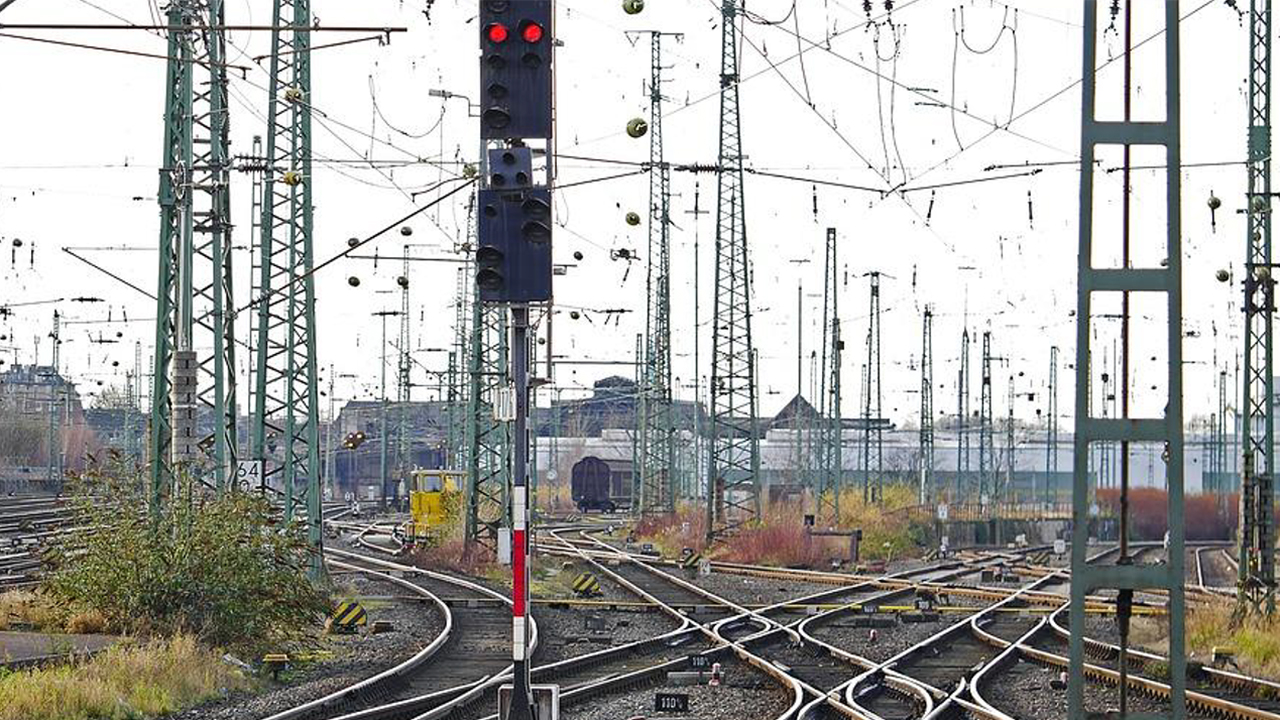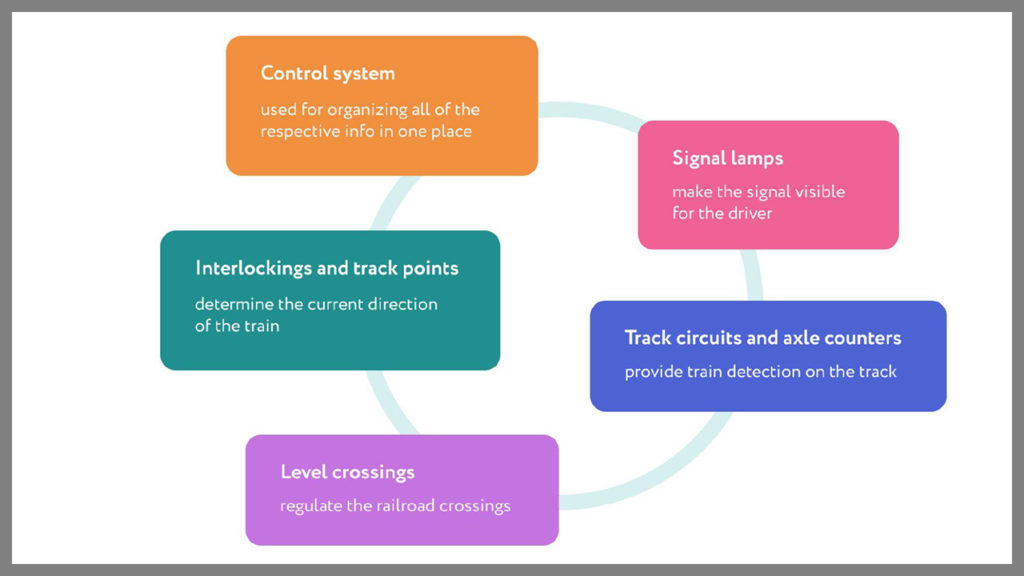
Which Rail Solutions Can Help Avoid Signaling Failures?
Written by Zach Prystash
In this article, we will discuss why signaling failures appear so often, and which solutions can be considered by rail companies to avoid them.
In Great Britain, the problem of frequent signaling failures is in the public eye, because of the well-developed network of passenger traffic. This trend is not surprising, as the passengers are greatly affected by train delays caused by signaling failures. Although this issue is no less prevalent in the U.S. compared to the U.K., it is more often acknowledged by the railroad industry than by the general public. However, this fact doesn’t make signaling failures unworthy of our attention, because they still cause damage. Signaling failures for both passenger and freight traffic are associated with a large investment of time required to study the problem and its elimination, as well as financial costs.
There are many reasons for signaling failures, and some may be preventable before they occur. Railway companies have started emphasizing this even more because so many new technologies and devices have appeared that contribute to convenient monitoring and preventive maintenance of the signaling equipment. However, developing a robust post-failure response strategy is also critical. By focusing on these two key points, Great Britain railways reduced signaling failures by nearly 10% in five years. However, there is still room for improvement. In this spirit, PSA shares their expertise on how to minimize signaling failures of the existing system, as well as what you need to pay attention to when designing new signaling systems.
What can go wrong in a signaling system?

Safety, as always, remains the top priority when choosing any rail solution. Concerning the rail signaling system, this holds especially true because the latter is responsible for preventing train collisions. The system doesn’t allow a train to move into a section when another train is there. For the signaling system to properly perform its functions, it is critical to configure the following subsystems:
Something can go wrong in every subsystem, and the longer the device functions, the higher the risk of its failure. However, these subsystems are designed to be fail-safe to eliminate the possibility of harm to other equipment, the environment, or to people. In case of some equipment failure, the signal changes to a prohibitory traffic sign, showing the track section as occupied, which forbids the train driver from moving forward. Failures associated with the appearance of a false prohibition sign of the auto-blocking traffic light are usually indicated as failures when the system has left the safe state. False failures are referred to as false traffic signal failures in the signaling or train control system, and activation failures in rail and highway crossing warning systems. These failures are extremely dangerous as the system continues to operate in unsafe conditions.
When choosing rail solutions for the design of a railway station, it is necessary to consider how they can minimize the risks of signaling failure. Below, we’ve described the most common reasons for failures and ways of avoiding them.
Track circuit failure
When the track circuit fails, the signaller can’t identify if the track section is clear or not. Most often, the cause of the failure of this mechanism is adverse weather conditions, such as rain, snow, and flooding. As a result, the track circuit can suffer from corrosion, as well as from other types of rail contamination, that may lead to short circuits. So, the main idea behind track circuit protection is safeguarding against the entrance of foreign substances.
The track circuits can be protected from ice and garbage using isolation, protectors, and electric heating systems. The cause of some issues, such as frequency drift, can fast-track circuit component aging. In this case, it might be worth considering upgrading the equipment on all lines, such as using molded tail cables to improve their performance. Each company evaluates its resources and business goals before innovating or simply changing equipment. But when deciding to upgrade the signaling, you need to choose a reliable development partner. The beauty of outsourcing is that it enables you to hire the best signaling engineers globally with the right education and experience. The right specialists will be able to analyze your specific equipment quickly then design individual rail solutions.
Railroad switch failure
The railroad switch is operated remotely and is manually engaged in case of failure. It can be fixed in a single position to allow the train to move further. However, like track circuits, track railroad switches might fail to function properly due to ice or debris. An insulation system combined with protective covers is sufficient to avoid such failures. Railroad switches can also expand in size at high temperatures. Painting the track in white can prevent expansion and help to decrease their temperature by almost 50 degrees Fahrenheit.
Axle counters failure
Axle counters can also suffer from heat or power supply failure. The train can’t be detected on the track section when this happens. It is critical to install a reliable power supply to avoid this. The most reliable solution, especially for new systems, is to install uninterruptible power supplies (UPS). UPS can replace aging cables too.
Other common causes
Sometimes signal lights fail. Not a big deal, right? While it’s easy to find the problem and replace the light bulb, switching to LED will reduce the frequency of changes and improve performance. When planning the station design, we recommend including LED lamps.
Another unpleasant case is the theft of signaling, telecoms, and power cables that can be scrapped afterward. Here we can advise improving the security system on the railway, for example, by installing surveillance cameras or special sensors that will report the presence of an intruder.
Rail solutions in predictive maintenance: How can they shape the future of the railroad?
As we noted earlier, in most cases, the ultimate reason for signaling failures is the human factor. Signaling equipment suffers when it’s not carefully and regularly maintained. Rail contaminations are becoming more and more critical, and it’s leading to signaling failures. Therefore, when designing signaling systems, use materials more resistant to external factors to reduce the need for human participation. Often, human error leads to the most catastrophic failures, which can have tragic consequences. So, it’s not enough to just have a diagnostic system of signaling mechanisms that can flag the issue when it appears. There is a clear need to prevent such cases by continually monitoring the system status to identify possible failure before it happens.
Thanks to modern technologies, the influence of the human factor is being reduced. For instance, the Internet of Things solutions can collect both discrete and continuous data from signaling equipment and analyze it to identify issues. Thus, you can determine the technical condition of the equipment, a place, and causes of a malfunction, forecasting the technical condition of the equipment. It will help:
- To reduce the number of failures by fixing them at the inception stage.
- To automate the control and maintenance of the signaling equipment’s quality.
- To reduce the time required to find the equipment’s malfunction and restore the working state of the signaling equipment.
Modern microprocessor signaling systems are equipped with built-in self-diagnostic tools. But such systems do not always allow to prevent equipment failure, only alert about the existence of the corresponding defect. Depending on the type of signaling equipment, you can either expand the built-in diagnostic functionality by adding new modules or equipping the system with additional sensors. By doing this, it would be possible to ensure continuous monitoring of all the critical parameters, such as current power consumption, voltages in track circuits, insulation resistance of cable cores, time of the points shifting, signal phases, etc. For example, you’ll be able to notice a decrease in the current power consumption that might lead to LEDs failures. By tracking the increase in power consumption, you might realize that there is some leakage current between wires, and so on.
When it comes to data analysis, it is possible to build up the new software and hardware and update the existing one, add new data processing functionality, control objects, make the required corrections in their functionality, and analyze emerging diagnostic situations. Don’t underestimate your existing signaling assets. Collected data can be sent to the workstations of various services. By having the correct organization of the distribution of diagnostic information, it is possible to improve the quality of their interaction.
What can help you monitor signaling systems?
Many track circuits and axle counters already have sensors for remote monitoring. In Britain, for example, this number reaches 40%. The latest IoT sensors can simultaneously measure many parameters and even be powered by the energy from the train vibration while it’s running. In addition, the data is collected by the sensors and transmitted to the server for processing and analysis. This process can be automated using artificial intelligence algorithms instead of the need for specialists to analyze the collected data. Every minute, sensors collect a large amount of data from the entire railway line. AI technology can easily group similar data and identify new, previously missed patterns. More detailed information will help the company accurately predict when a particular mechanism may fail and, as a result, perform preventive maintenance proactively.
As well as sensors, drones can monitor the signaling equipment, trains, cars and infrastructure objects. Some applications, such as TerraDrone, allow the creation of 3D models based on shots taken by drones. Using these tools is convenient when modeling the signaling system, the track, stations, and trains. Since the signaling system does not exist in isolation from other railway infrastructure facilities, this solution is convenient because it provides data from all the railway lines.
Implementing these solutions allows you to:
- Organize continuous monitoring of the interlocking equipment status with an indication of deviations from the norms.
- Easily interface with microprocessor-based equipment;
- Build new software.
- Perform quality control and maintenance on the equipment.
- Create the prerequisites for the transition to new methods of device maintenance.
If necessary, you can expand the system by adding special modules. One example is the automatic analysis of current oscillograms obtained during the translation of the station points to diagnose their condition. It may be necessary to provide different conditions for all of the rail infrastructure objects on a single line as they may be located a long distance from each other. Therefore, the complete digitalization of railways would also help in the field of improving safety.
Conclusions
Signaling failures often happen because of physical causes such as rail contamination, corrosion, heat, or flooding conditions. To minimize risks of their occurrence as well as expenses they cause, we advise:
- To have a reliable on-premises team that can help to fix the issue immediately, and apply maintenance measures in due time.
- To consider IoT solutions for the railways, such as smart sensors, drones, and simulation software. Implementing the entire IoT ecosystem will help the company to analyze data and apply timely predictive maintenance.
- To consider modern protective materials while designing the railway station. They will help reduce the incidence of contamination.
- When you have to upgrade equipment, design a new signaling system or station, contact a team of signaling engineers with a corresponding college degree and great experience in the rail industry. They will be able to suggest effective rail solutions that will suit your railway conditions.
If you correctly implement a strategy to improve the signaling system by taking into account advice from above at the design stage, you would minimize train and freight delays, and therefore reduce costs of railway operation. The best option is to implement continuous computer monitoring, as well as AI algorithms to be able to identify the problem before it occurs. Finally, digitization of the entire railway line is the most effective and optimal path.

Zach Prystash is Business Development Manager, Rail Signaling at Professional Software Associates Inc. (PSA). Thriving at the junction of railway signaling and the Industrial Internet of Things (IIoT) inside PSA, Zach specializes in building client solutions that bring together signaling technologies and overall business objectives. A liaison to PSA’s invaluable technical engineering team, he provides companies with expertise in the signal design of electrical interlockings, microprocessors and relay-processor systems.



